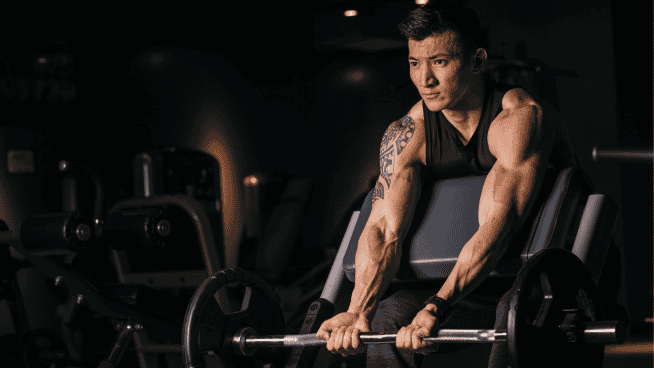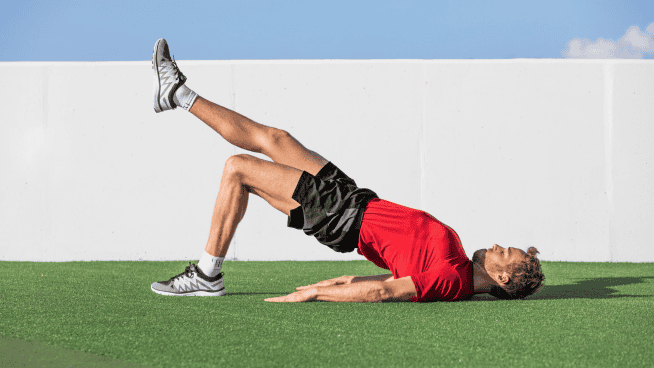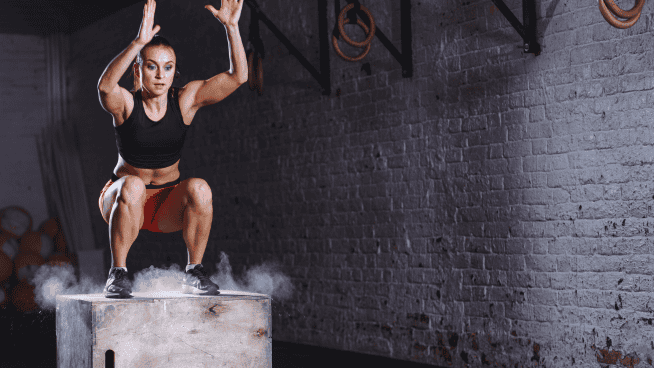A Guide to Different Front Squat Grips
The Front Squat grip can be a bit tricky if you’re new to the exercise. It might feel like the bar is choking you, or hurting your wrists, or you might feel like you’re going to drop it.
RELATED: How Your Arm Position Can Ruin Your Squat (And How to Fix It)
But that shouldn’t deter you. Several Front Squat grips can accommodate pretty much everyone.
And that’s a good thing, because it’s one of the best exercises for developing strong and powerful legs and hips and a sturdy core.
Here are three Front Squat grips that you can try to take advantage of this exercise.
Front Rack

This traditional Front Squat grip is also used in Olympic lifts such as the Clean. The barbell rests across your shoulders, and your elbows are forward with your fingertips under the bar. The weight of the bar is on your shoulders, and your fingertips provide some control, but don’t forget you’re not holding the bar with your hands.
RELATED: Tips for Perfecting Front Squat Technique
This position can become problematic if you don’t have enough mobility to get into it. Maybe your biceps are so huge you simply can’t get your hands under the bar, or it hurts your wrists to bend them backwards to get your fingertips under the bar.
If you find it uncomfortable, try the next grip.
Cross-Grip Front Rack

The same rules apply for the Cross-Grip as for the Front Rack. The weight of the bar is still on your shoulders. But you cross your arms in front of your body and place your hands on the bar at your opposite shoulders. This should eliminate any pain and mobility issues, but it may not feel as stable as the Front Rack position.
If that’s the case, try the next grip.
Towel/Strap Holds

If you have a pair of lifting strap or hand towels, loop them around the bar where your hands would normally go. Then grip the straps a few inches above the bar and raise your elbows high, similar to the Front Rack. This eliminates the mobility issues caused by the Front Rack without sacrificing stability. For many athletes, this should be their grip of choice.
RECOMMENDED FOR YOU
MOST POPULAR
A Guide to Different Front Squat Grips
The Front Squat grip can be a bit tricky if you’re new to the exercise. It might feel like the bar is choking you, or hurting your wrists, or you might feel like you’re going to drop it.
RELATED: How Your Arm Position Can Ruin Your Squat (And How to Fix It)
But that shouldn’t deter you. Several Front Squat grips can accommodate pretty much everyone.
And that’s a good thing, because it’s one of the best exercises for developing strong and powerful legs and hips and a sturdy core.
Here are three Front Squat grips that you can try to take advantage of this exercise.
Front Rack

This traditional Front Squat grip is also used in Olympic lifts such as the Clean. The barbell rests across your shoulders, and your elbows are forward with your fingertips under the bar. The weight of the bar is on your shoulders, and your fingertips provide some control, but don’t forget you’re not holding the bar with your hands.
RELATED: Tips for Perfecting Front Squat Technique
This position can become problematic if you don’t have enough mobility to get into it. Maybe your biceps are so huge you simply can’t get your hands under the bar, or it hurts your wrists to bend them backwards to get your fingertips under the bar.
If you find it uncomfortable, try the next grip.
Cross-Grip Front Rack

The same rules apply for the Cross-Grip as for the Front Rack. The weight of the bar is still on your shoulders. But you cross your arms in front of your body and place your hands on the bar at your opposite shoulders. This should eliminate any pain and mobility issues, but it may not feel as stable as the Front Rack position.
If that’s the case, try the next grip.
Towel/Strap Holds

If you have a pair of lifting strap or hand towels, loop them around the bar where your hands would normally go. Then grip the straps a few inches above the bar and raise your elbows high, similar to the Front Rack. This eliminates the mobility issues caused by the Front Rack without sacrificing stability. For many athletes, this should be their grip of choice.










